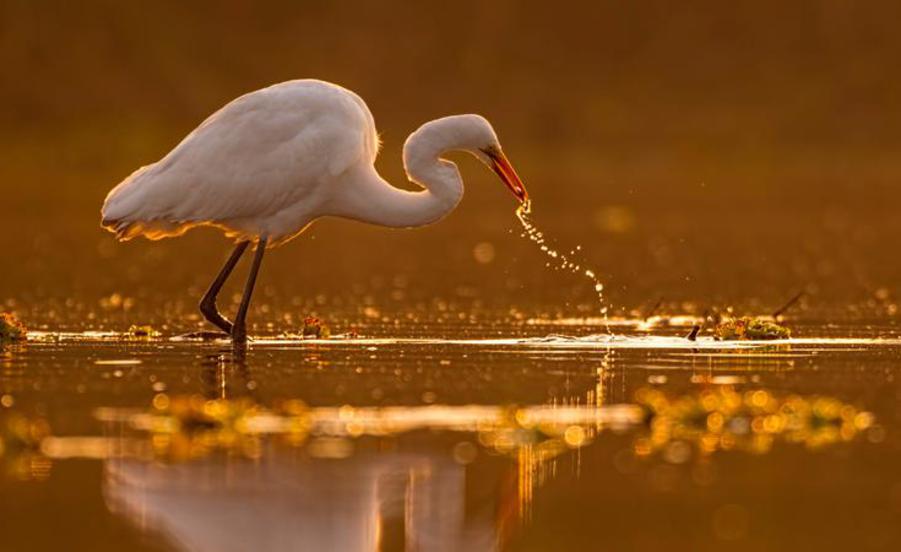by Mikal Wix
January 16, 2024
Mikal Wix lives in the American South, which seeds insight into many outlooks, including revenant visions from the closet. Their work can be found or is forthcoming in Corvus Review, Olit, Berkeley Poetry Review, Tahoma Literary Review, Roi Fainéant Press, decomp journal, and elsewhere, and works as a science editor by day.
A History of Half-Birds by Caroline Harper New; Milkweed Editions; 96 pages; $16.00.
In the late 1970s, the French philosopher, Roland Barthes, wrote that “myth consists in overturning culture into nature or, at least, the social, the cultural, the ideological, the historical into the natural.” This idea of overturning culture into nature drives the voice in Caroline Harper New’s book of poems, A History of Half-Birds, selected by Maggie Smith to win the Ballard Spahr Prize for Poetry published by Milkweed Editions. One might even argue that this book illustrates how poetry is the best way to upend the traditional (right-handed or clockwise) presumptions of storytelling — that it must unspool in long, fixed narratives. Instead, poetry remakes myth through the discontinuous expression of phrases (left-handed or counterclockwise), creating a phraseology of the mythical. As the author offers in the book’s second poem, “Widdershins,” “…if left to instinct, humans walk circles counterclockwise. Think of the hippodromes.”
The Old French and Latin etymology of the word sinister reveals its origins in left-handedness, in widdershins. Language isn’t always fair to all its users unfortunately. But one important role for poetry (and poets) to play is that of creating “a momentary stay of confusion,” to use Robert Frost’s words, or to restabilize oneself, to use Gregory Orr’s word. And New’s poems actively perturb the foundations of our public and personal mythologies to achieve this conviction. From the titular reference to half-birds (the sirens in the poem “The Loon’s Solid Bones Help Her Sink”) to the character of the moon in the final poem, “Moon Song for My Mother,” New works her craft to cast poetic spells that weave new meanings from the dichotomies of kindness and cruelty, of science and myth, of culture and nature. In “Auguries by Mouth,” a trip to the dentist evokes an interior exploration of heritage and memory and riding (or not riding) horses, of learning how to swim (the hard way), of learning how to love something or someone who is full of omens, of the prophetic indication of decay. The metaphors investigate the ephemeral connections between the existential anxieties of human life and the entropic reality of nature and language, similar to how fairy tales help to resolve degrees of uncertainty among cradle-to-grave epiphanies.
Paradox is a sharp edge cutting through moments in time and poetry. What things seem to be dissimilar are found to be similar, to the point at which revelations appear. New combines the paradoxical to unveil the profound, the mythical, and the intuition by using metaphor to pry open the unconscious. Each poem seems to be, at its center, about a feeling, an emotion as constellation in a star network of lyrical sensations. And radiating out from the kernel are the limbs of metaphor by way of comparison, which appear to be contradictory at first glance but revelatory later. In the opening poem, “The Elephant Mother,” the core feeling is about motherhood, specifically (and eloquently said) “She never wanted children. She only wanted to set something free….” This passionate state is articulated by the narrative of a woman who spends years searching and preparing an enclosure (home) for the arrival of a retired circus elephant only to realize that motherhood encompasses birth and burial: “You can use the same chains.” One might guess that the choice of narrative here, as with others in the book, purposefully illustrates the monomyth, (i.e., the hero’s journey), a path followed in which the person encounters many challenges to overcome in order to progress in circular fashion from adventure to adventure.
Caroline Harper New’s poetry in A History of Half-Birds is a robust and enterprising collection of real and imagined dreamscapes designed to provoke the subliminal and visceral to beautiful effect, or maybe to butterfly effect, as the poems all support the notion that our world is deeply interconnected. How seahorses refuse to help save Amelia Earhart from drowning; how jellyfish hang in trees like Christmas lights; how Skinner’s pigeons showed that free will is an illusion, and yet we still choose to mourn loss, perhaps another variation on suspicious behaviors or religious fervor in “Notes on Devotion.” The conceptual aim of a poetics of synthesis through disintegration is New’s essential deliverance. As a poetry reader, I can think of few other etiologies to help manifest how we interpret a chaotic universe, and New’s poems are luscious figures in the brume, like beacons: “Look closer, she says, they’re chandeliers.”
In the end, we race counterclockwise because it’s easier for most of us, whether it’s for historical, biological, or practical reasons. However, in the book, widdershins reflects this behavior as a type of madness, running contrary to the sun’s course. Science doesn’t explain everything, it seems. The poet offers us another path to understanding the curse, and the trail New shows us to follow is lined with exquisitely crafted lines. These poems are bold and elegant charms and full of shamanic vigor — a fantastic premiere collection of poems by an enthralling voice. As stated clearly in the poem of the same name, “Widdershins,” witchcraft, augury, lunacy, and devilry are worthy of account, and how one solves a riddle relates to how one tells a story: “We study the past to know the future.”
©2024 Iron Oak Editions
__________________________________________________________________________________________________________________________________________________________________________
__________________________________________________________________________________________________________________________________________________________________________
__________________________________________________________________________________________________________________________________________________________________________
__________________________________________________________________________________________________________________________________________________________________________
__________________________________________________________________________________________________________________________________________________________________________
Counterclockwise: Mythical Connotations in the Poems of A History of Half-Birds by Caroline Harper New
POETRY REVIEW
Stay Connected to Our Literary Community. Subscribe to Our Newsletter




